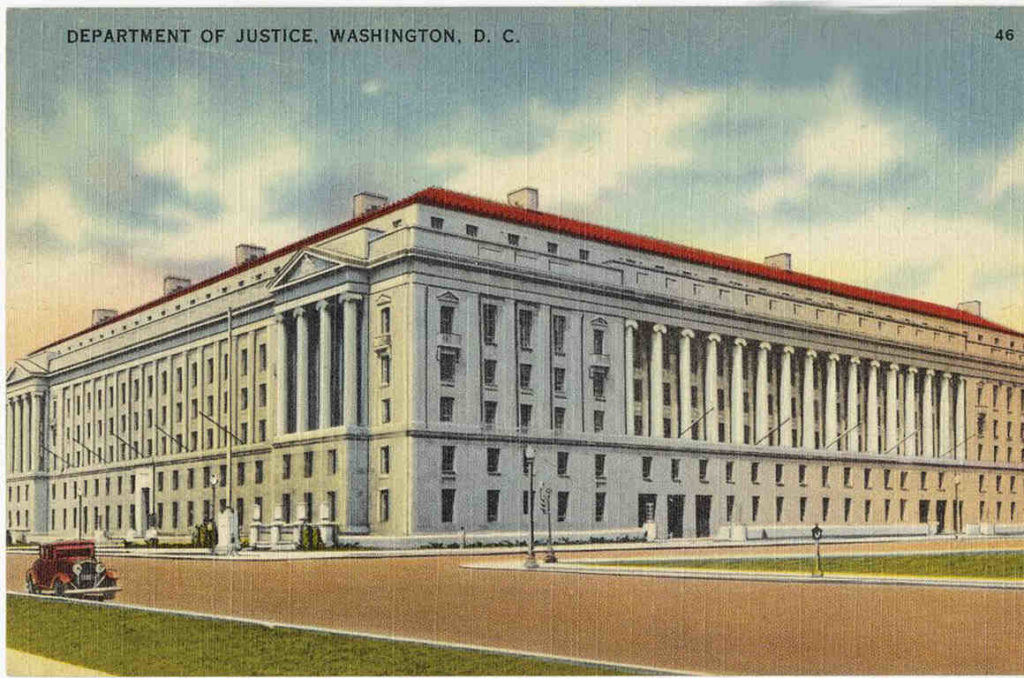Doing Justice to APA Modernization
The Justice Department’s recent “Summit on Modernizing the Administrative Procedure Act” proved to be a great step toward the goal of reforming the APA to reflect and respond to modern administrative reality. If you were interested in the event but couldn’t attend, then you can find the videos online: here, here, and here. The text of Deputy Attorney General Jeff Rosen’s keynote remarks are also available, here.

APA modernization needs substantial involvement and direction by the Justice Department, because the Attorney General and his colleagues are uniquely well situated to analyze both the practical reality of the modern administrative state, and the merits and deficiencies of current administrative law. The DOJ is not the only department or agency that matter, of course; the work of reform benefits from a variety of executive-branch participants, especially ACUS. But the Justice Department’s unique role in the actual exercise of executive power (in the course of both the execution of laws and then the defense of government action in litigation), and its combination of both expertise and political accountability, makes it indispensable in the work of modernizing administrative law. It is no coincidence that the Justice Department played a central role in creating the original APA nearly 75 years ago, first in diagnosing the actual character of administrative agencies, and then in analyzing the law that Congress eventually enacted.
So the best version of APA reform would do what the original APA did: map pragmatic rules on top of actual administrative reality. And for that reason, the DOJ team did a real service in assembling not just panels of scholars and legislative staff, but also a panel of agency lawyers to detail the agencies’ own efforts to reform their own practices. Agencies, like states, can be “laboratories” for reform, giving Congress examples of “best practices” that could ultimately be legislated for all agencies. (The Department of Transportation, for example, recently proposed new standards for formal hearings for some significant or “high-impact” rules, a test-drive for the long-debated Regulatory Accountability Act.) In that respect, APA reform is an example of the best kind of legal realism—namely, a realistic assessment of what the law actually is and does, for the sake of writing new law. The DOJ team sees this too, as evidenced by a panel title—”Lessons from the Life of Administrative Law: What Experience Teaches…“—that points us back to Holmes.
Listening to the discussions, I was struck by how clearly the discussion illustrated the fact that the task at hand is not to “deconstruct the administrative state,” but rather to reconstruct a more republican state. Modernizers and reformers need to think not in terms of demolishing institutions, but rather in terms of building new and better institutions.
On that point, the best modern example of reform remains the Office of Information and Regulatory Affairs. It succeeded not because President Reagan signed an executive order, but because he signed an E.O. that built upon what already was taking root inside of agencies for years, and then the Reagan and Bush Administrations undertook the years-long work of building the institution, so that President Clinton inherited an institution that could overcome whatever lingering ideological opposition remained in 1993. Today’s modernizers need to read Andrew Rudalevige’s study of OIRA, in National Affairs and The Journal of Policy History, to see why regulatory reform requires sustained investment of political capital. Executive Orders, such as the ones that are a good start of something, but far from the achievement of anything.
The same can be said of the Justice Department’s terrific summit: it was a tremendous first step, and it would be a shame to see it wasted by not building upon it with further work. Let’s hope that the Justice Department leads reform-minded agencies in producing reports comparable to the Attorney General’s Committee’s seminal 1941 report, and the Brownlow Committee reports that preceded it. (Deputy Attorney General Jeff Rosen, well versed in these reports and those of the Hoover Commissions, knows this well.)
None of this is to say that APA modernization is simple. It is, at its root, an effort to refine the practical allocation of power among the executive, legislative, and judicial branches, in an area of law—namely, administrative law—that exemplifies the blurry lines that separate all three. As James Madison observed in Federalist No. 37, “[e]xperience has instructed us that no skill in the science of government has yet been able to discriminate and define, with sufficient certainty, its three great provinces the legislative, executive, and judiciary.”
Madison’s words still ring true; they shouldn’t deter lawyers and legislators from persisting in their commitment to our Constitution’s separation of powers, but they should remind us to approach the matter with appropriate humility, and with care paid to the hard-earned lessons of American experience.
On that note, I’m happy to note that the C. Boyden Gray Center for the Study of the Administrative State has already been working with friends to plan our third annual Administrative Law Symposium, this time dedicated to the APA’s upcoming 75th anniversary. Look for more details in the new year.
Adam White is a resident scholar at the American Enterprise Institute and an assistant professor of law at George Mason University, where he directs the C. Boyden Gray Center for the Study of the Administrative State.
(Cross-posted to Medium.)



